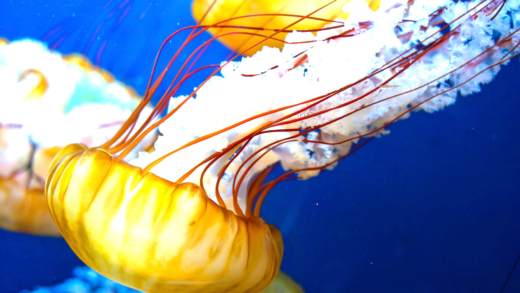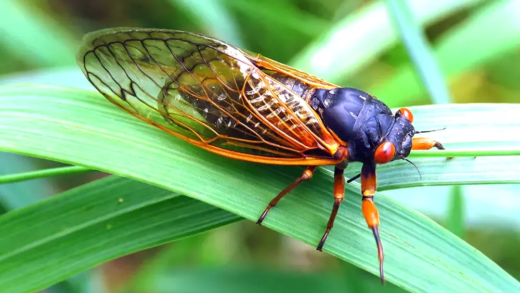The spotted lanternfly is an invasive pest posing significant threats to agriculture. Effective control involves preventing its spread, recognizing signs of infestation, and employing natural predators. Communities must engage in combined efforts for effective management.
What is the Spotted Lanternfly?
The spotted lanternfly is an invasive insect known for its striking appearance. Adults are approximately one inch long, featuring a black body with distinctive red and white spots on their wings. The forewings are gray with black spots, while the hindwings are bright red with black markings. Nymphs, in their earlier stages, are black with white spots, transitioning to red as they mature. Their life cycle includes four nymph stages and an adult phase, making them easily identifiable at various stages.
Where Did the Spotted Lanternfly Originate?
The spotted lanternfly (Lycorma delicatula) is native to Asia, particularly in regions like China, India, and Vietnam. It was first discovered in the United States in Pennsylvania in 2014, likely arriving through shipping materials. This pest has since spread across several Eastern states, raising concerns among agricultural communities and environmentalists. Understanding its origin is crucial for developing effective control measures and preventing further spread.
How Does the Spotted Lanternfly Spread?
The spotted lanternfly spreads primarily through human activity. They can hitch a ride on vehicles, outdoor equipment, and even shipping materials. Their eggs, which are laid in masses covered with a waxy substance, can easily be overlooked. Once they hatch, nymphs disperse to feed on host plants. Notably, they are attracted to the tree of heaven (Ailanthus altissima), their preferred host. This behavior facilitates their spread across different regions, posing significant risks to local ecosystems.
Preferred Plants of the Spotted Lanternfly
The spotted lanternfly has specific plants that it prefers for feeding. Understanding these plants is crucial for managing this pest. The primary host for the spotted lanternfly is the tree of heaven (Ailanthus altissima), which provides an ideal environment for its life cycle. Other preferred plants include:
- Maple trees
- Willow trees
- Black walnut trees
- Fruit trees such as apples and grapes
- Ornamental plants like birch and sycamore
The spotted lanternfly feeds on the sap of these plants, which can weaken them and lead to reduced growth or even death. The insects excrete a sticky substance known as honeydew, which attracts other pests and encourages the growth of sooty mold. This can impact the aesthetic quality of the plants and reduce their agricultural value.
Threats to Agriculture from the Spotted Lanternfly
The spotted lanternfly poses a significant threat to agriculture, particularly in regions where it has established a population. Farmers are especially concerned due to its feeding habits, which can damage a variety of crops. Key points regarding the threat include:
- Direct damage to crops, especially fruit-bearing plants, can lead to significant financial losses.
- The honeydew excreted by the spotted lanternfly can lead to fungal growth on crops, further damaging them.
- Infestations can result in a decrease in crop yield and quality, which affects marketability.
- Management and control measures can also incur additional costs for farmers.
As the spotted lanternfly continues to spread, its impact on agricultural productivity becomes more pronounced, necessitating prompt action and effective control strategies.
Signs of a Spotted Lanternfly Infestation
Recognizing the signs of a spotted lanternfly infestation is critical for early intervention. Here are some indicators to watch for:
- Presence of adults: Look for the distinctive black and red spotted insects on tree trunks and leaves.
- Egg masses: These are often found on tree bark, outdoor furniture, and other surfaces. They appear as gray, waxy masses, resembling spilled glue.
- Honeydew and sooty mold: The sticky substance can be found on leaves and surfaces beneath infested plants, leading to black mold growth.
- Wilting or yellowing leaves: Affected plants may show signs of stress due to sap feeding.
Identifying these signs early can help in taking necessary actions to control the infestation and prevent further spread.
Preventing the Spread of the Spotted Lanternfly
The spotted lanternfly can cause significant damage, making prevention crucial. Here are practical tips to help protect your property:
- Inspect Vehicles and Equipment: Always check your vehicles, outdoor equipment, and trailers for any signs of the spotted lanternfly before moving them. This helps prevent their spread to new areas.
- Remove Egg Masses: If you find egg masses on trees or outdoor furniture, scrape them off and dispose of them in a sealed bag or by crushing them. This can significantly reduce the population.
- Maintain Healthy Plants: Keep your plants healthy and well-maintained to withstand any potential infestations. Healthy plants can better recover from sap feeding damage.
- Use Tree Bands: Applying sticky bands around the trunks of susceptible trees can trap nymphs as they climb up to feed. This is a physical barrier that can help control their movement.
- Educate Others: Share knowledge about the spotted lanternfly with your neighbors and community. Awareness is key to preventing its spread.
By implementing these strategies, you can play a vital role in stopping the spread of the spotted lanternfly in your area.
What to Do If You See a Spotted Lanternfly
Encountering a spotted lanternfly requires immediate action to help control its population. Here’s what you should do:
- Report Sightings: Notify your local agricultural extension office or pest control authority about any sightings. This information can assist in tracking and managing the infestation.
- Take Photos: Capture clear images of the insect, its egg masses, or any signs of infestation. This documentation can aid experts in identification and response.
- Do Not Release: Avoid releasing the spotted lanternfly back into the wild if you capture it. Instead, kill it or contact a professional for safe disposal.
- Check Your Surroundings: Look for additional signs of infestation nearby, such as honeydew or sooty mold, and take appropriate action to address it.
Prompt action can help limit the impact of the spotted lanternfly on local ecosystems and agriculture.
Natural Predators of the Spotted Lanternfly
While the spotted lanternfly is a significant pest, some natural predators may help control its population. These include:
- Birds: Certain bird species, such as woodpeckers and blue jays, may feed on nymphs and adults of the spotted lanternfly.
- Insects: Some predatory insects, like ladybugs and lacewings, can also help reduce the number of nymphs.
- Parasitoids: Research is ongoing into parasitoids that may target the spotted lanternfly’s egg masses, providing a natural means of control.
Encouraging these natural predators in your garden can contribute to managing the spotted lanternfly population, promoting a balanced ecosystem.
Control Measures for Spotted Lanternfly Population
Effective management of the spotted lanternfly involves a combination of strategies:
- Pesticides: Use targeted insecticides as a last resort, following guidelines from agricultural authorities. It’s essential to apply them responsibly to avoid harming beneficial insects.
- Community Efforts: Participate in local programs aimed at controlling the spotted lanternfly population. Community-wide efforts can lead to more effective management.
- Research and Monitoring: Stay informed about ongoing research and monitoring efforts. Support initiatives that aim to find sustainable control methods.
- Integrated Pest Management (IPM): Adopt an IPM approach that combines biological, cultural, and chemical strategies for effective control.
By employing these control measures, communities can better manage the threat posed by the spotted lanternfly and protect their agricultural interests.





Comments are closed.